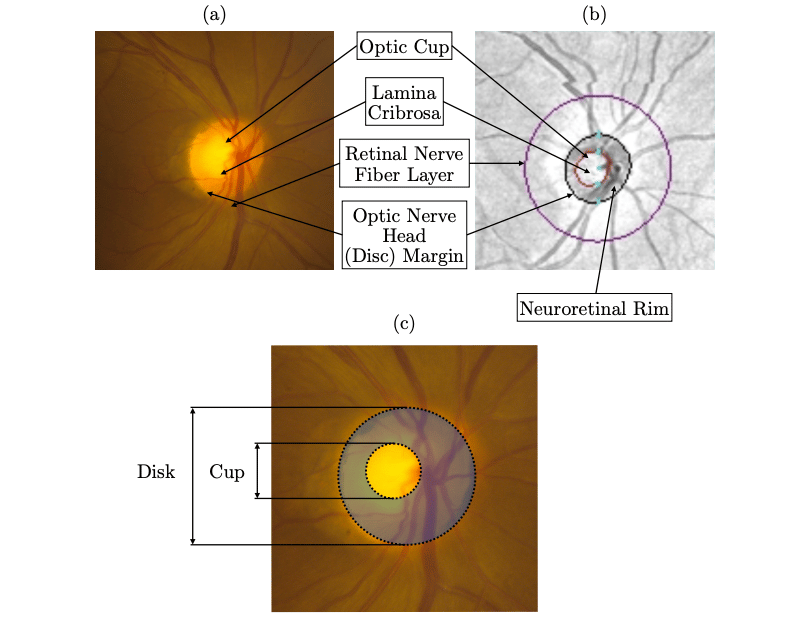
In a collaboration with Stanford Hospital and hospitals in Hong Kong, India, and Nepal, Matroid is using computer vision to push the boundaries of Ophthalmology. We have created a high-performing model that learns to predict glaucoma from areas often ignored by doctors during diagnosis – specifically Lamina Cribrosa, as no established metrics exists yet for this region. We were able to detect glaucoma on OCT scans of the eye, with an F1 score of 96% and similar AUC and accuracy.
Our model was trained on a dataset from Stanford Hospital and tested on data from Hong Kong, India, & Nepal to control for race, hospital, technician, and OCT machine. We validated our learned model using saliency maps and world expert clinicians.
As shown below, the nerve fiber layer thickness is used as a metric to track glaucoma. The Lamina Cribrosa is not assigned with any metrics, because clinicians don’t have strongly correlated metrics for it, even though we know it is associated with glaucoma.
Currently, the dataset has not been made public as there are legal complexities of releasing the data. However, we are in the process of working through the laws from four different countries, in addition to the IRBs from a variety of institutions across four countries.
Matroid is making strides in the health care industry and forging the future through technology! Stay tuned for more information regarding our glaucoma project at twitter.com/matroid.
Building Custom Computer Vision Models with Matroid
Dive into the world of personalized computer vision models with Matroid's comprehensive guide – click to download today